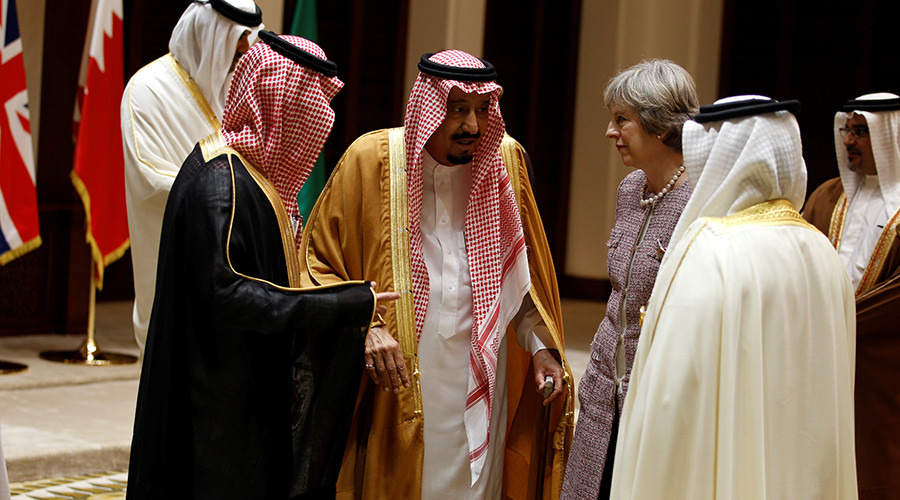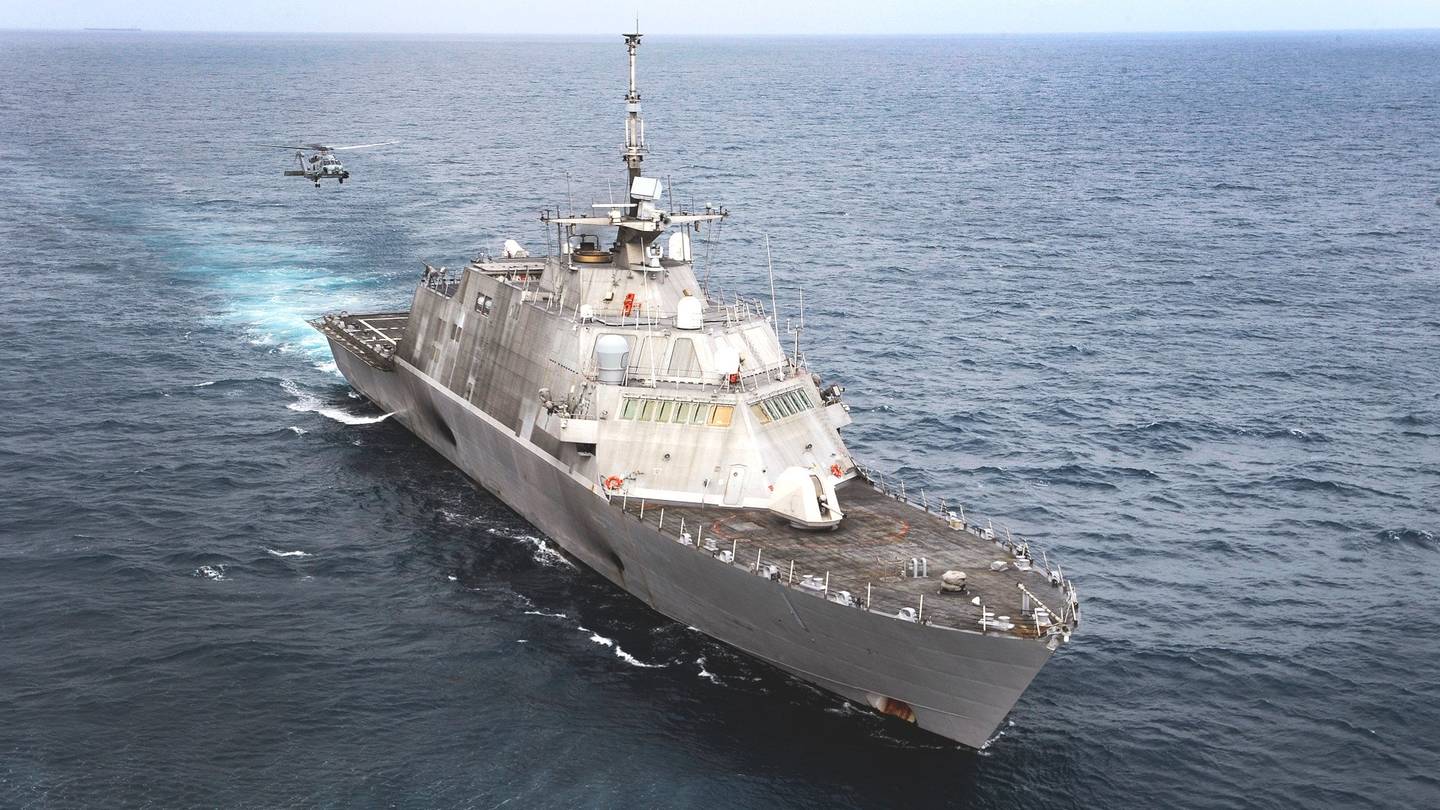
U.S. President Donald Trump will unveil the largest single American weapons sale to Saudi Arabia to date during his trip to the kingdom, which began on May 19, 2017. The deal will include weapons and equipment for the Royal Saudi air and land forces, which have been critical in Riyadh’s intervention in Yemen, as well as ballistic missile defense systems essential to for the country to counter Iran's missile forces during a conflict. However, it may be new support for the relatively small Royal Saudi Navy that speaks more to the country’s desire to project even greater power in the Middle East and beyond.
On May 18, 2017, The New York Times published an insider’s look into how White House advisor Jared Kushner, who is also Trump’s son-in-law, had been actively involved in the arms sales, which many expect will be worth between $100 and $110 billion in immediate deals and up to $350 billion in total over the next decade. In particular, Kushner had personally intervened, as is the style of the Trump administration, to get the Saudis a discount on components of the Terminal High Altitude Air Defense (THAAD) system – the same weapon the United States had very publicly deployed to South Korea earlier in 2017.
Also on May 18, 2017, Bloomberg confirmed that the Pentagon and their Saudi counterparts would finalize a $6 billion deal with Lockheed Martin for four modified versions of the company's Freedom-variant Littoral Combat Ship – six percent of the total U.S. arms package. The rest of the deal will include thousands of precision guided munitions, 50 CH-47 cargo helicopters, 60 smaller UH-60 transport choppers, 115 M1A2S Abrams tanks, among other items.
But buried among the palace intrigue and talk of advanced aircraft, precision guided munitions, and anti-ballistic missile defenses, was mention of unspecified “maritime assets” that the Saudi Arabia hoped to acquire from the United States. This would mean “ships” the authors explained, “so the Saudis can assume more of the burden of policing the Persian Gulf and Red Sea against Iranian aggression.”
The warships are the center-piece of the American-funded Saudi Naval Enhancement Program II (SNEP II), which began in 2008. The United States, and the U.S. Navy in particular, supported supported the first SNEP in the 1980s, where the Saudi Arabia purchased a large fleet of modern naval vessels, ranging from frigates to small patrol boats, from the United States, France, the United Kingdom, and other countries. After this modernization project, Riyadh boasted the largest and best equipped naval force in the Persian Gulf region.

Jacques Lahitte via Wikimedia
The Al Makkah, one of Saudi Arabia's four Al Riyadh-class frigates.
These ships formed the core of the country’s naval forces more or less as they continued to exist three decades later. The Saudi Navy’s only addition since then was its purchase of four modified French La Fayette-class frigates, which it named the Al Riyadh class, in 2003. As of 2017, these nearly 15 year-old ships were the country’s most modern warships. These 4,650-ton vessels have launchers for Exocet anti-ship and Aster 15 surface-to-air missiles, along with four torpedo tubes, a helicopter and a 76mm main gun. The design has limited stealthy features to help make it less visible to enemy radars.
But what was state-of-the-art more than two decades ago is showing its age now. From the very beginning, SNEP II called for four all-new “frigate-like” surface combatants, with a displacement of approximately 3,500 tons. These would replace an equal number of older French-supplied Al Madinah-class ships that the Saudi Navy had received under the original SNEP. This portion of the program also proved to be especially troublesome.

USN
A standard Freedom-variant LCS
The initial requirements seemed relatively steep, with officials in Riyadh interested in a lightweight vessel that still had a radar and battle management capability similar to Lockheed Martin’s advanced Aegis system, including its powerful AN/SPY-1 passive electronically scanned array. In reality, “Aegis-like” really meant that it would have technology derived from that equipment.
Instead of the full-size SPY-1D radar, the new ships would have the SPY-1F variant specifically for frigates and corvettes, which had half the range of the standard unit. The COMBATSS-21, which included some components of the Aegis system, would link the radar to the ship’s other sensors and weapons.
Lockheed Martin produced both of these products. So, U.S. officials and company representatives proposed installing this equipment, along with a 16-cell Mk 41 vertical launch system (VLS), deck-mounted Harpoon anti-ship missile launchers, and SeaRAM close-defense systems, on a modified version of the firm’s Freedom-variant Littoral Combat Ship (LCS). The resulting warship became known as the Multi-Mission Surface Combatant (MMSC). In October 2015, the Saudis agreed to buy the ships. While at Foxtrot Alpha, The War Zone’s Tyler Rogoway wrote a deep dive into the precise capabilities of these planned ships.
The primary weapon for the ship's Mk 41 VLS would be RIM-162 Evolved Sea Sparrow Missiles, "quad-packed" four to each of the 16 launch cells, for area air defense against both aircraft and cruise missiles. The latest version of the SM-2 was another potential option, which would offer even longer range, but less plentiful, anti-air and even anti-surface capabilities.
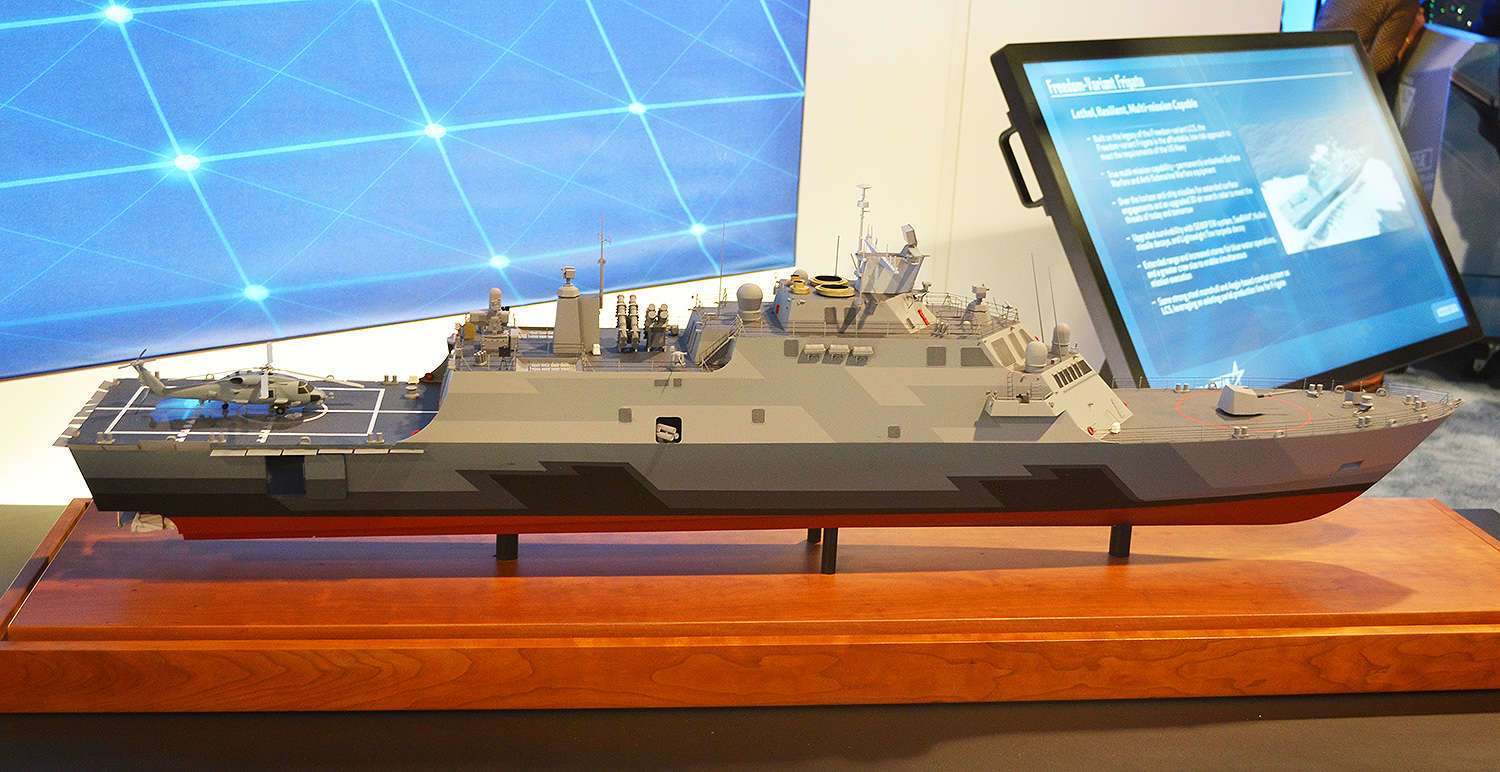
Joseph Trevithick
A model of a the Freedom-variant frigate Lockheed Martin has offered to the U.S. Navy, similar to the proposed MMSC.
Unfortunately, according to a report by Defense News three months later, the Saudi Navy had become horrified at the expected price tag, which unnamed sources said was between $750 million and $1 billion per ship. In addition, Lockheed Martin told the Saudis it would take up to seven years to deliver the first example. By that point, SNEP had been running for nearly a decade and the officials in Riyadh had already moved ahead with a separate $1.9 billion deal to buy 10 MH-60R helicopters and associated weapons and equipment, another part of the SNEP II plan.
It seems impressive that the Saudis have been willing to pay even more in the end for the ships, suggesting they may come with new and improved capabilities over the original design proposal, or it could just be a symptom of the changing political winds in Washington.
The Saudi's purchase of the ships will be important for the U.S. Navy, since the they will likely fund development of a drastically upgraded LCS variant—one that includes area air defense capabilities—that many, including some members of Congress, have been pushing the Navy towards procuring instead of a far less capable "up gunned" Littoral Combat Ship concept. Sharing the burden with the Saudis in crafting the new configuration would not only offset development costs, but if the Navy were to also buy the ship, it would push the unit cost down overall.
Otherwise, Much of the rest of the Saudi naval modernization program has already been sorted out or is otherwise already in progress. In July 2013, the Pentagon alerted Congress about a potential sale of 30 Mark V offshore patrol vessels, each armed with a single 27mm cannon and various smaller weapons, as well as associated spare parts, training support, and other items. That whole package was worth approximately $1.2 billion.
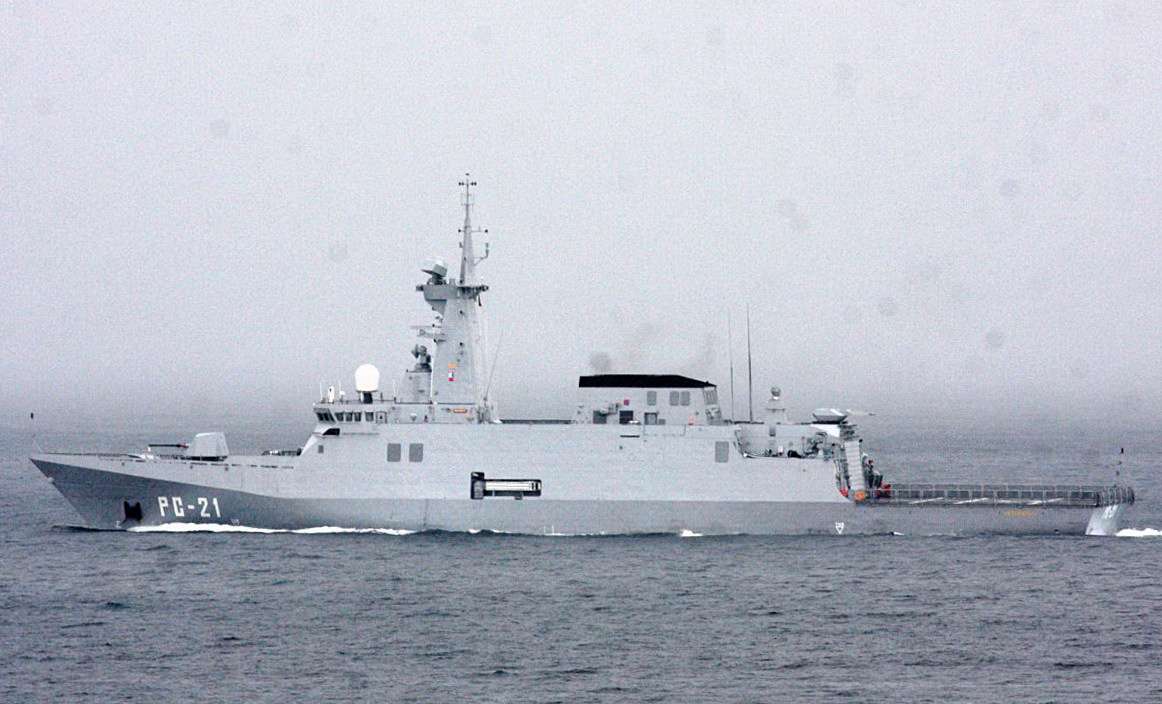
barracuda via Wikimedia
Venezuela's Avante 2200 corvette Guaiquerí.
In January 2016, Spanish shipyard Navantia said it was working with the Saudis to develop a version of its Avante 2200 corvette. These ships, which also have limited stealth characteristics, would meet Riyadh’s requirement for six 2,200-ton ships. At the time, only Venezuela operated a variant of this ship, the Guaiquerí-class, which had a 76mm gun, a 35mm automatic cannon, and two .50 caliber machine guns. These vessels also had radar, electro-optical sensors, and electronic warfare equipment. A helipad at the rear could accommodate a helicopter such as the MH-60R, another thing Saudi Arabia was looking to purchase through SNEP II. However, it is unlikely the United States would offer to pay for the purchase of a foreign vessel.
Other elements of SNEP II included three maritime patrol aircraft and anywhere from 30 to 50 unmanned surveillance aircraft. The Pentagon might be keen to try and sell the Saudis on Boeing’s P-8A Poseidon, which they have already expressed an interest in previously. Insitu’s ScanEagle or RQ-21 Blackjack drones, both of which the U.S. Navy and Marine Corps have actively used aboard ships and on land, would be good options for the sort of drone officials in Riyadh seem to be looking to buy.
In 2016, through other foreign military sales contracts, Riyadh had secured support to expand boat ramps and piers to make room for SNEP II ships at King Abdul-Aziz Naval Base in Jubail along the Persian Gulf. In addition, the U.S. Army Corps of Engineers managed construction contracts for other facilities ashore, including a new headquarters for the Saudi naval special operations elements. Two years earlier, the U.S. Navy had begun farming out work to expand the Saudi Navy’s command and control communications network. In the 1990s, the U.S. military had helped the Saudis migrate over to the Global Command and Control System-Maritime, which improved their ability to coordinate with American naval forces. It is possible that the 2017 military assistance plan will include more funding for construction and other support projects.

DOD
An aerial view of King Abdul-Aziz Naval Base in 1990.
Regardless, Saudi Arabia is likely to have decided it couldn't afford to wait much longer to get the ships into production. As SNEP II has progressed, the character of the Persian Gulf has changed significantly. More than anything, Saudi Arabia has had increasing tensions with a resurgent Iran while officials in Tehran have made improving and expanding their military a priority to do its best to ward off any challengers.
What this means is that Iranian forces now have a significant posture on the other side of the Persian Gulf. In February 2017, the U.S. Office of Naval Intelligence published a public report on Iran’s naval and coastal defense elements. It included a map highlighting that Iranian land-based anti-ship cruise missile batteries could reach much of Saudi Arabia’s northeastern coastline and had coverage in depth throughout the rest of the strategic waterway. On top of that the Iranian Navy and the country’s parallel Iranian Revolutionary Guards Corps Navy had significant numbers of small, missile-armed corvettes and fast attack craft, mine-layers, and semi-submersibles and traditional submarines of various sizes.
This increasing threat of smaller or underwater craft overwhelming Saudi Arabia’s aging warships hasn’t gone unnoticed. During the Iran-Iraq, Iranian forces targeted Saudi and Kuwaiti tankers moving Iraqi oil. At the time, the Saudi Navy was still modernizing and could do little to protect the ships, relying instead on American forces to guard the shipments during what became known as the "Tanker War."
Since 2007, Iran has made repeated threats to close of the narrow Strait of Hormuz, which leads out of the Persian Gulf into the Gulf of Oman and out into the Indian Ocean. Doing so would significantly limit Saudi Arabia’s ability to export oil and related products, which are the country’s lifeblood. Though doing so would touch off an international incident, Iran might be able to do significant damage to regional economies before the crisis ended.
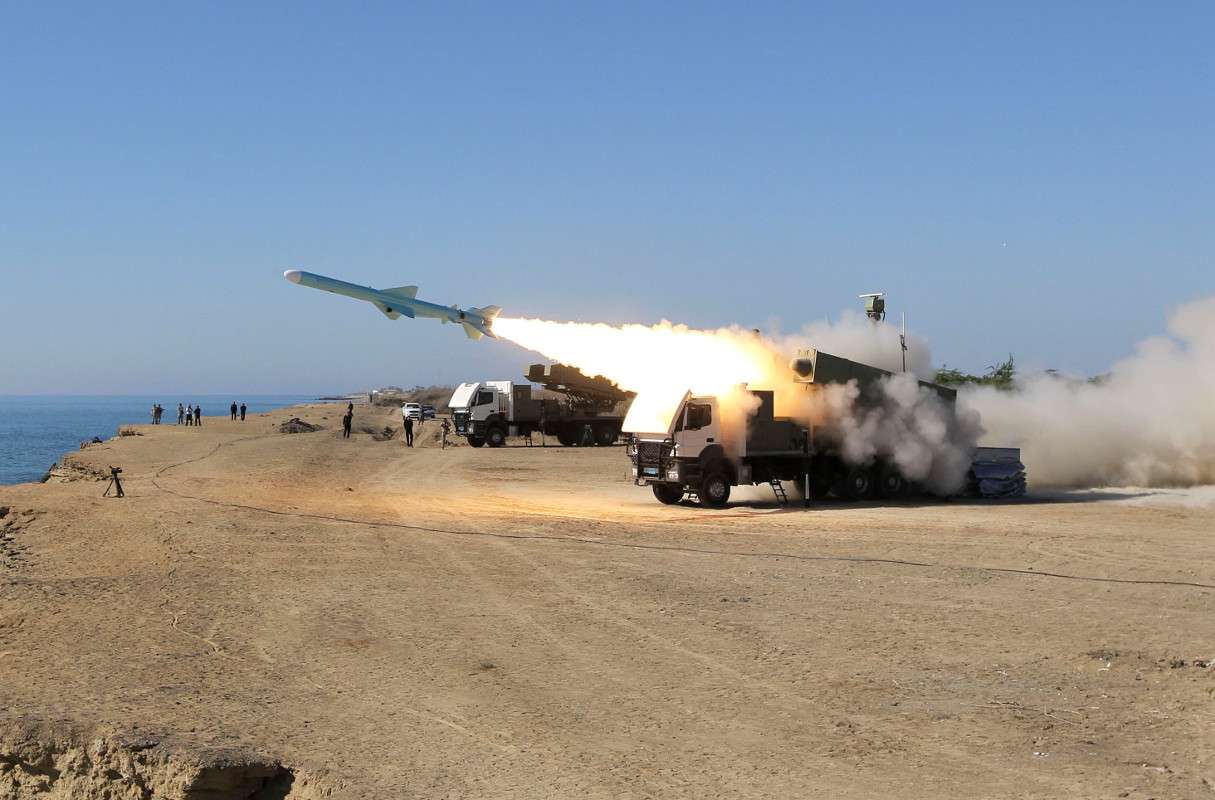
AP
Iranian forces fire a Ghader land-based, anti-ship cruise missile.
In addition, Tehran has made a number of high profile, if often laughable naval sojourns out of the Persian Gulf, seeking to project its power into the Mediterranean Sea and Indian Ocean, going as far south as South Africa in 2016. If the Saudis decide they want to try and match these expeditionary missions, they’ll definitely want additional, blue-water capable warships.
Since 2015, the government in Riyadh has been fighting a complicated and brutal war of attrition against Iranian-backed rebels in Yemen, which I've previously written about in detail. These forces have access to both ballistic and anti-ship cruise missiles, as well as more unconventional capabilities including unmanned aircraft and boats, as well as home-brewed naval mines.
As the Saudis and their allies, have attempted to blockade the flow of weapons and other supplies into Yemen, the dangers have become increasingly visible. In October 2016, a rebel cruise missile destroyed a military vessel from the United Arab Emirates. Afterwards, militants fired more anti-ship missiles at American warships in the area, which they see as aligned with the Saudi-led coalition, though they failed to do any damage. Then, in January 2017, Yemeni militants successfully rammed what appeared to be an unmanned, explosive-filled boat into the Al Madinah, killing two Saudi sailors.
For Saudi Arabia, it has to be relatively clear that new naval capabilities are essential to confront what the Pentagon refers to as “anti-access/area-denial” capabilities. Additionally, the Saudis are coming to terms with the reality that they have two strategic shipping choke points to keep open, plus the need to have a stronger, more persistent presence in the Persian Gulf, Arabian Sea, Gulf of Aden and the Red Sea. With this in mind and with so much Saudi treasure having been spent on the Saudi Air Force and Army, as well as the country’s Praetorian Guard-like Saudi Arabian National Guard, it’s the Royal Saudi Navy’s turn to replenish its fleet with fresh U.S. weaponry.
http://www.thedrive.com/the-war-zon...abilities-will-balloon-thanks-to-us-arms-deal


